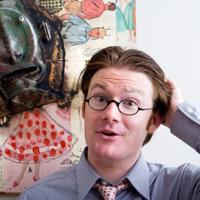Writer and Neurodiverse Advocate Jonathan Mooney talks about the word and social construct of “normal” and how throughout history it has perpetuated the marginalization of whole swaths of human beings from black and brown people, indigenous populations, people who identify as LGBTQ+, and people with atypical brains and bodies.
This video appears in:
Transcript
The word, the construct of normal. Where does it come from? How has it been used? What can we do about it? You know, those are the questions that have driven my work for 22 years. I often talk about how I went to Brown and excelled there. And then people will come to me and say, oh man, you overcame your dyslexia. There’s actually a book called Overcoming Dyslexia which implies, forget implies, states very clearly that dyslexia is a problem that you have to overcome.
The reality is I didn’t overcome dyslexia. If I overcame anything it was dys-teacha [laughs], you know? Like, that’s what I, that’s what I overcame. I overcame, you know, the way that my differences were treated in environments designed for the idea that we should all be the same. And so, at the heart of that, though it took me a long time to articulate it, is wrestling with this long history of normal as a dominant cultural value.
Normal has a history, not a history of discovery, you know, but a history of invention. Normal isn’t a fact in the world, you know? Some scientists didn’t find the normal human being. It’s a construct that was created, frankly created to perpetuate the marginalization of whole swaths of human beings, Black and Brown folks, indigenous populations, LGBTQ+ folks, and of course folks with atypical brains and bodies.
And if it’s been invented, constructed, well, then it can be deconstructed, it can be challenged. It doesn’t have to define me, you, anybody else. But, to say that normal has a history, you know, to say that it’s the history of invention, not discovery, does not mean that it’s not real in the world.
Normal has been put to nefarious usage. You know, it’s been used to disqualify human beings as less than and then justify their marginalization, and in the most extreme, their extermination. You know, the genocide of indigenous populations was scientifically justified by pseudo-scientists talking about how some folks - European White folks – [laughs] were normal and other folks weren’t.
And when it comes to folks with atypical brains and bodies, the incarceration and extermination was an explicit goal of the global eugenics movement in which the Third Reich took its inspiration from American scientists.
So, that means that what’s happened to folks with atypical brains and bodies is not a tragedy that we should feel bad about, it’s a crime that’s been perpetuated that we should be outraged about. And that leads to doing something about it, you know? To being an advocate.
What matters is trying to make things better for people, you know. And that requires not just being an advocate for folks who learn differently, you know, but it requires being an advocate, an ally, an up stander for all folks who have been discredited by this fictional construct of the normal human being.
For more information about learning disabilities, please visit LDOnLine.org. This video was made possible by a partnership between the National Education Association and WETA.
